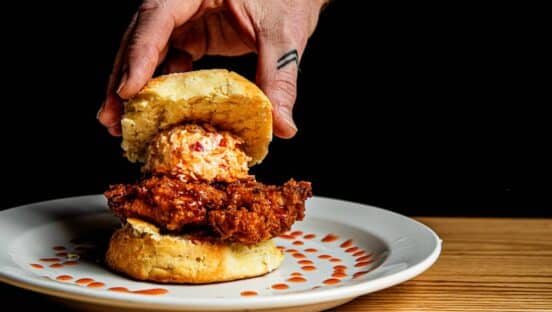As the coronavirus made its way to the U.S., San Francisco held the distinction of being the first city in the country to announce a “shelter-in-place” order.
Handed down on March 16, the precaution brought a stark new reality for bars and restaurants in the city by the bay, which had already been effectively limited to delivery and takeout. There was a good amount of government information available, but, still, no area operators had a precedent for what they were about to endure. Emerging chains in the city in particular had to get creative to stay afloat.
“I think one of the first things on everyone’s mind was, ‘How do we take care of our employees?’” says Jesse Kay-Rugen, operator of two Glaze Teriyaki locations in the city. “But also, there were simple logistics you hadn’t ever had to think about, like what is the safest way to interact with customers? Should we let them pay in cash? Should they even be allowed to pay in person?”
The list of questions went on, and there were no perfect answers. To tag-team solutions, Kay-Rugen was frequently in touch with friend and mentor Andrew Johnstone, owner and operator of The Little Chihuahua, a quick-service Mexican brand with five locations.
“It’s not that other operators were telling me things and I was thinking, ‘Oh, wow, I hadn’t thought of trying that,’” Kay-Rugen says. “It’s more that by talking to them you know that you’re in it together, and it helps confirm that you’re doing the right things. For example, I knew I unfortunately wasn’t alone when I had to lay off 70 percent of my staff in order to keep the restaurants alive. I knew I wasn’t alone when I had to close one of our two locations. So that sort of serves as a reaffirmation.”
While Johnstone had his own unique challenges to meet, he was in a similar situation to most operators in San Francisco, with nowhere to look for perfect ideas but a need for some measure that might help soften the impending blow. With the situation rapidly progressing, Johnstone says, the key was to communicate frequently with staff and draw up plans for how to keep revenue coming in.
“There was no playbook, we just had to do it,” Johnstone says. “At first we had meetings about what this might look like, then it became the new normal, and then it was just simply our business model for the near future.”
A plus for The Little Chihuahua was its new online ordering program, in beta testing at the beginning of the lockdown. The team was able to immediately make it live. Pre-COVID, off-premises already accounted for 55 percent of sales, but with delivery and pickup as the only source of revenue post-shelter-in-place, opening up the new online ordering platform was crucial. It was another example of making a decision that might not have been ideal, but fit the moment.
Eventually, The Little Chihuahua also pivoted to crowdsourcing funding to make meals for the healthcare workers in the city. The concept promoted its fundraisers on social media to overwhelming results.
“I think one of the things that we really believed was that we had to get creative,” Johnstone says. “If I had to choose something positive that might come out of this, it is that the process of putting things back together has made us reconsider absolutely everything about our business model—maybe we can all seize this opportunity to become more sustainable businesses and even bigger parts of our communities.”
Another Bay Area brand that had to get creative to bring in cash and keep employees working was Mixt, an 18-unit salad chain that ultimately was forced to temporarily shutter 10 locations. CEO Leslie Silverglide says the team felt as prepared as they could have been for the news.
“We weren’t that surprised,” she says. “We saw in the first week of March that people were already moving towards working from home, and starting to restrict movement of their own accord. We saw consumer behavior change long before the mayor stepped in.”
That meant the company had time to interact with frequent guests to find out what they were looking for. Mixt sent out an email brief in early March detailing exactly which steps they were taking to keep their employees and customers safe, and eventually came up with a unique program: Customers could “pay what they could,” meaning anyone was eligible for a 25 percent, 50 percent, or 100 percent discount. After hearing feedback from guests, the brand also established a way that customers could pay the discount forward.
With this initiative, Silverglide and her corporate staff solved several problems at once. They fed people who needed food and who may have just lost significant income. But they also successfully invited traffic into their stores, allowing them to keep many employees working, and provided a service for the communities that have made their brand a success over its 15-year life span.
“We just really believe the people in our communities are good, and they will only take what is necessary for them,” Silverglide says. “I think it also shows we are all in this together, and we will get through this, and that’s what I keep telling people.”
Still, while these solutions were successful in the midst of COVID-19, will they apply to other unforeseen circumstances in the future? Maybe that’s not the key lesson here, Kay-Rugen says.
“More than anything, this experience reaffirms a couple of my main beliefs when it comes to working in restaurants,” he says. “One, you always have to be adaptable. And two, you will always rely on other people in the industry to help you. The network of restaurant workers in the city has been incredible, with everyone putting their heads together and trying to figure out how we solve this.”










